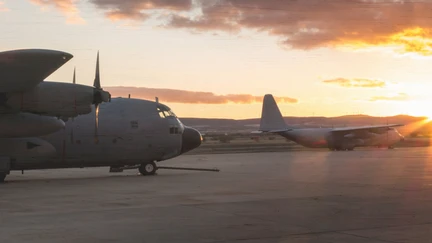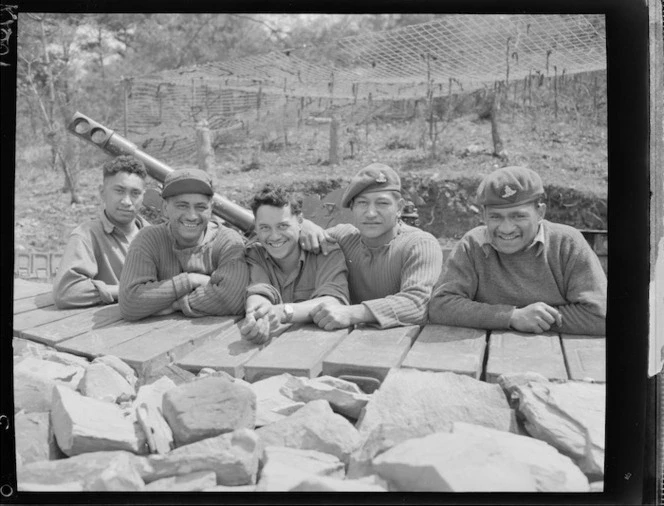Ngā pakanga i muri mai - Later conflicts
Later conflicts include the Korean War and the Vietnam War. Learn about Māori and overseas service after 1945.

Korean War
"Hostilities in the Korean War lasted from 1950 to 1953. Kayforce, the New Zealand contingent in Korea, did not contain formal separate Māori units. However, Māori often informally organised themselves into gun crews or other small units. Initially Māori made up 7.5% of Kayforce, but about one in four of the later reinforcements were Māori."
Monty Soutar, 'Ngā pakanga ki tāwāhi – Māori and overseas wars - Overseas service after 1945', Te Ara
Read more about Māori and Kayforce on Te Ara:

NZ DIA. War History Photos relating to WW 1914-1918, WW 1939-1945, occupation of Japan, Korean War, and Malayan Emergency. Ref: K-2007-F. Alexander Turnbull Lib /records/22749706
Maori gun crew serving in Korea, during the Korean War.
- New Zealand in the Korean War — NZHistory.net
- Audio — Wiremu (Bill) Keiha, on NZHistory.net
"Wiremu (Bill) Keiha, of Rongowhakaata and Te Aitanga-a Māhaki, was a signalman with the 7th Reinforcements in the Korean War. Here he discusses food in Korea with oral historian Pip Desmond." - Pokarekare Ana in Korean — Yeon-ga
"During the 1951 Korean War, New Zealand soldiers taught local children Pokarekare Ana. It is now well-known in Korea, and sung there, both in Maori, and in this Korean version." - Sounds Of Friendship Concert: Arirang Meets Pokarekare Ana
Vietnam War
"Vietnam was the first war in which New Zealand did not fight alongside the British, but there was a reassuring Commonwealth presence in the form of Australia. New Zealand's effort was closely aligned with that of its trans-Tasman neighbour, especially after 1966, when V-Force formed part of an Australian task force. Vietnam was the first major war in which New Zealand's regular army was involved (as opposed to the former citizen-soldier expeditionary forces)."
Ian McGibbon, 'Asian conflicts - Vietnam War', Te Ara
About Māori in V-Force, Te Ara further says:
"New Zealand's effort in Vietnam reflected the increased involvement of Māori in the regular forces. No separate Māori unit had been created during the Korean War, and by the end of that conflict about one in four of those serving in Kayforce were Māori. The New Zealand battalion in Malaya from 1957 had a similar proportion of Māori. Some estimates of the Māori presence in Vietnam have been as high as 60%. In reality, Māori formed 35% of V-Force, but with many more officers and non-commissioned officers than previously. At the time, Māori were about 10% of New Zealand's total population."
Ian McGibbon, 'Asian conflicts - Vietnam War', Te Ara
Find audio and video memories, and a Vietnam veterans list on the official Vietnam War New Zealand site below:
Watch The Shadow of Vietnam, a 1995 documentary that gave soldiers that went to Vietnam a chance to tell their stories for the first time, after returning home to a society that was divided about their service overseas:
"Between 1964-1972, 4,000 young New Zealanders volunteered for service in Vietnam. Itching to get out into the world and do something exciting, the thrills were soon replaced by the grim reality of war. Things deteriorated further when they returned home to face an angry public; they were told to get out of their uniform quickly and not to tell anyone where they had been."
NZOnScreen, summary, 'The Shadow of Vietnam'
Here, as a final reflection on the stories on this page, are the waiata of Dennis Marsh — 'Man from Vietnam' and a 'Lest we forget' medley: